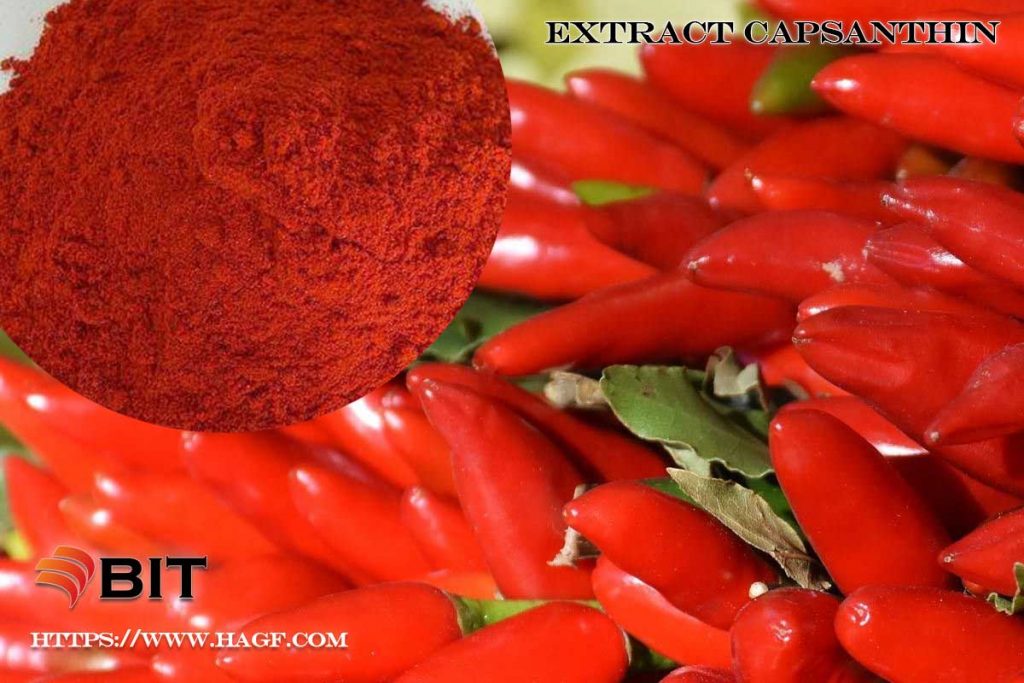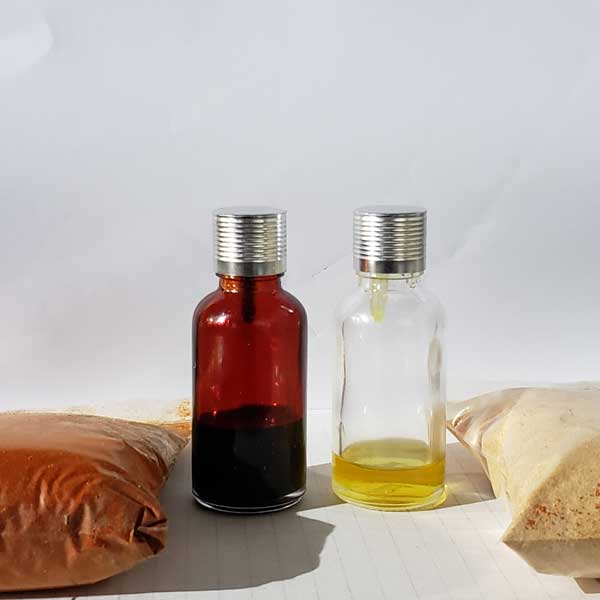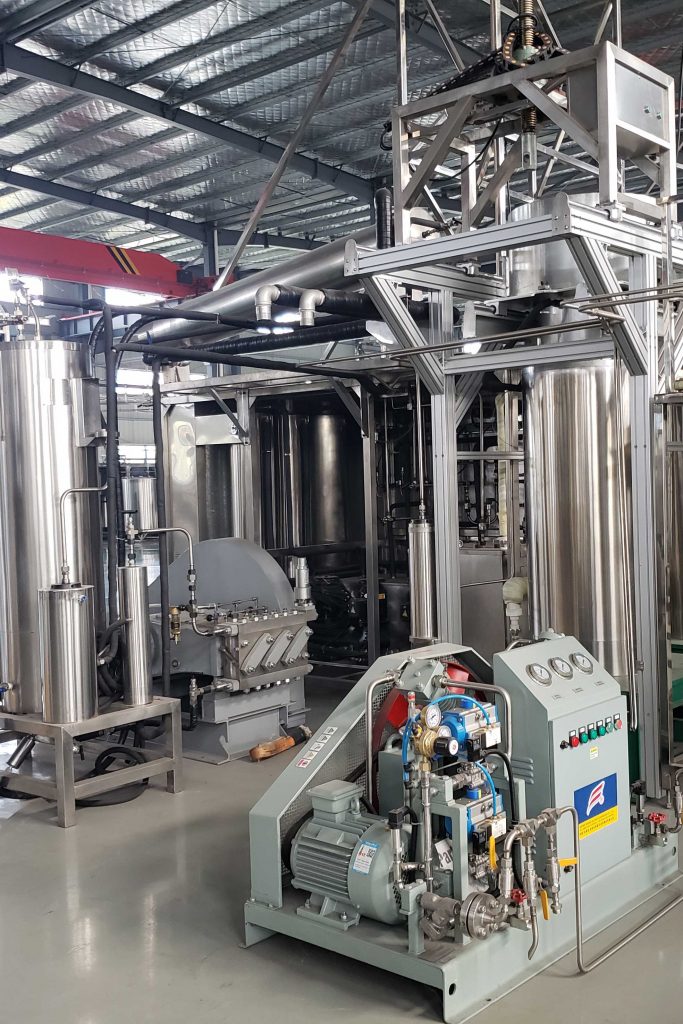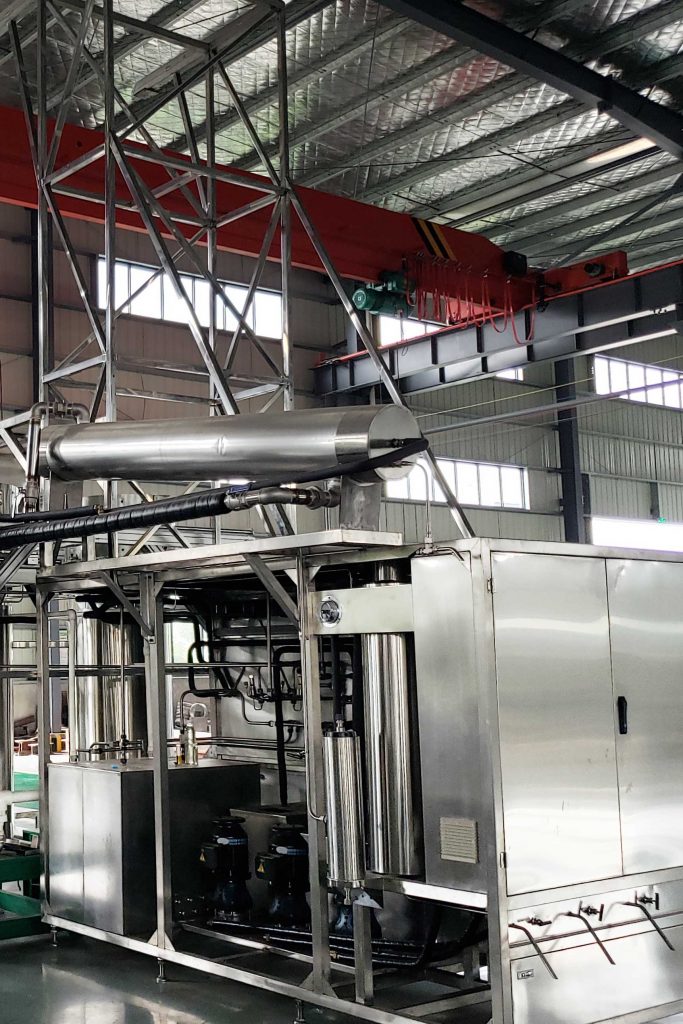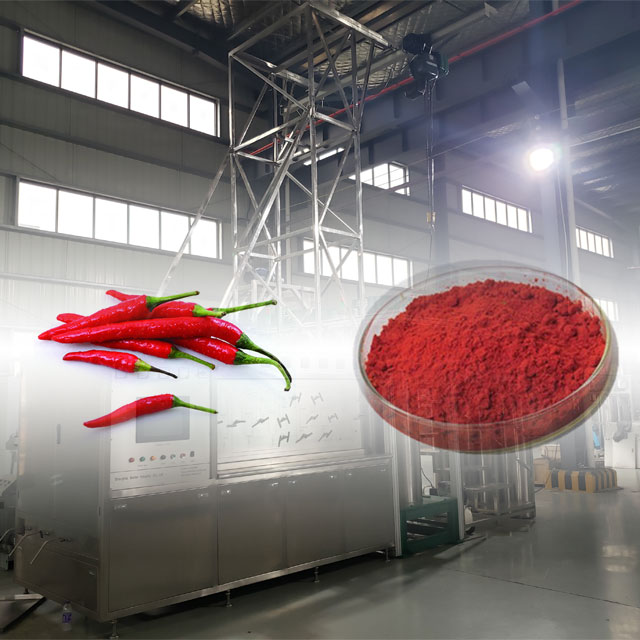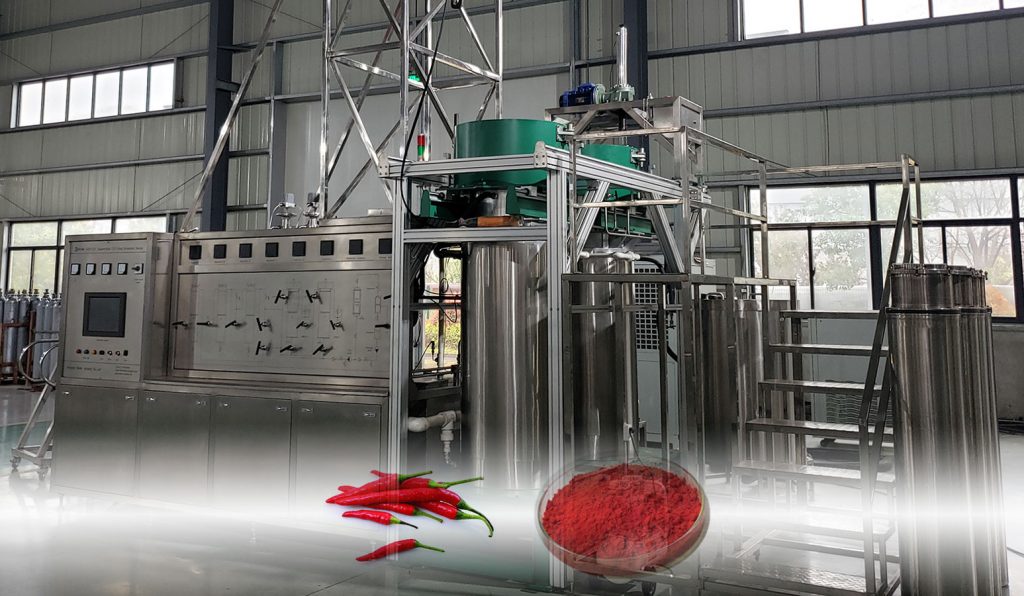Supercritical CO2 fluid extraction is a novel and effective separation technology that has become increasingly popular in the field of natural pigments and active ingredients. In this study, we aimed to investigate the optimal conditions for extracting chili red pigment and capsaicin using supercritical CO2 fluid extraction.
First, the effects of extraction conditions, including pressure, temperature, time, and the addition of co-solvent on the extraction rate of chili red pigment and capsaicin, were investigated. The results showed that the optimal extraction conditions were as follows: pressure of 30 MPa, temperature of 40°C, extraction time of 120 min, and the addition of 5% ethanol as a co-solvent. Under these conditions, the yield of chili red pigment and capsaicin were 23.4 mg/g and 3.5 mg/g, respectively.
To further understand the extraction mechanism, the physicochemical properties of supercritical CO2 and the extract were analyzed. The results showed that supercritical CO2 had a low viscosity, high diffusivity, and moderate polarity, which can effectively extract chili red pigment and capsaicin from the plant materials. Additionally, the extract obtained under the optimal conditions had good stability, antioxidant activity, and inhibition effect on α-amylase activity.
Experimental data
Furthermore, two tables were generated based on the obtained experimental data. Table 1 shows the effect of pressure and temperature on the extraction rate of chili red pigment and capsaicin. It can be seen that the extraction rate of both compounds increased with increasing pressure and temperature. Table 2 shows the effect of the addition of co-solvent on the extraction rate of chili red pigment and capsaicin. It can be seen that the addition of ethanol as a co-solvent significantly improved the extraction rate of both compounds.
Effect of Pressure and Temperature on the Extraction Rate of Chili Red Pigment and Capsaicin
| Pressure (MPa) | Temperature (°C) | Extraction Rate of Chili Red Pigment (mg/g) | Extraction Rate of Capsaicin (mg/g) |
|---|---|---|---|
| 10 | 40 | 6.2 | 0.9 |
| 20 | 40 | 12.6 | 1.8 |
| 30 | 40 | 23.4 | 3.5 |
| 40 | 40 | 32.1 | 4.9 |
| 30 | 50 | 27.8 | 4.1 |
| 30 | 60 | 30.5 | 4.6 |
Effect of the Addition of Co-solvent on the Extraction Rate of Chili Red Pigment and Capsaicin
| Co-solvent (%) | Extraction Rate of Chili Red Pigment (mg/g) | Extraction Rate of Capsaicin (mg/g) |
|---|---|---|
| 0 | 21.8 | 3.2 |
| 1 | 22.7 | 3.4 |
| 3 | 23.2 | 3.5 |
| 5 | 23.4 | 3.5 |
| 7 | 22.8 | 3.4 |
| 10 | 21.6 | 3.2 |
Conclusion
Supercritical CO2 fluid extraction is an efficient and promising method for the extraction of chili red pigment and capsaicin. The optimal extraction conditions were determined, and the physicochemical properties of the extract were analyzed. The obtained results provided a scientific basis for the industrial production of chili red pigment and capsaicin.
Chili red pigment
Red pepper contains chili red pigment and capsaicin.
Capsaicin
Capsaicin can be made into anti-tumor and analgesic drugs, and it is very popular in the international market.
Capsanthin
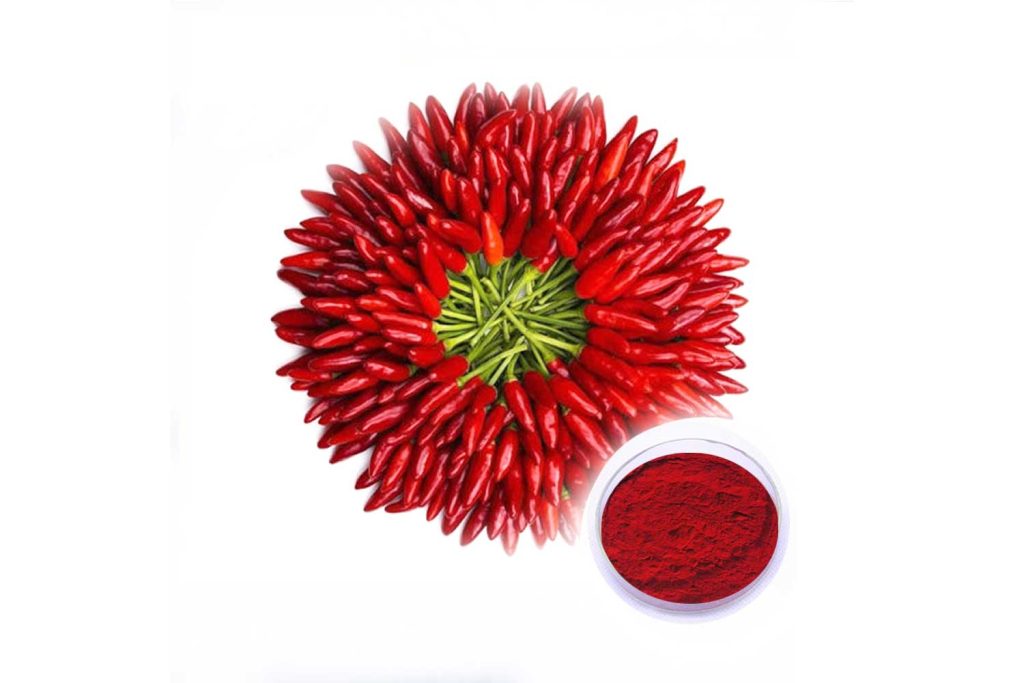
Chili red pigment belongs to carotenoid pigments, including capsanthin, capsorubin, zeaxanthin, beta carotene, etc.
Capsanthin has bright colors and various tones. It is soluble in edible ethanol at 1:15. It is red at 1/5000, orange at 1/8000, and yellow at 1/12000. It is currently one of the most widely used natural pigments. , It is widely used in food, medicine, cosmetics, daily necessities and other fields.
Capsanthin does not have any side effects on the human body, so ADl (human daily intake) is stipulated internationally as “unrestricted”, and it has been produced in the world for a long time.
Currently the United States, Britain, Canada, Japan and other countries are in a leading position. Japan’s annual output is 260t, accounting for 1.1% of its domestic natural pigment market demand.
Capsaicin extraction method
Traditional extraction method
The traditional Capsanthin extraction methods are oil-soluble method and solvent method. The general process uses a two-step method:
Step 1: Extraction
First use an organic solvent to extract the plants to obtain a paste-like viscous liquid (commonly known as extract or oleoresin);
Step 2: Refining
Using organic reagents to extract, the soluble components in the plant are dissolved. In addition to useful pigments and fragrance components, there are also various impurities, especially tar smell, spicy smell and other peculiar smells.
- Refining is to remove the peculiar smell from the extract or oleoresin, that is, deodorization.
- The traditional refining method uses strong alkalis, strong acids and salts for washing. This method has a long process, high cost, and is easy to bring in heavy metal ions. Strong alkalis can also damage some pigments and affect the color tone.
- Later, there were many ways to improve, but in general, there were problems such as complex process, low product purity, peculiar smell, and high solvent residue.
Supercritical CO2 extraction method
At present, the research work using supercritical CO2 fluid to extract Chili red pigment and capsaicin mainly includes the direct extraction of capsanthin and capsaicin and the refining of capsicum oleoresin.
Experiments show that the optimal extraction conditions are particle size <1.2 mm, extraction pressure 15 MPa, and extraction temperature 50 ℃.
In the extraction process, the separation effect of capsicum pigment and capsaicin was judged according to the absorbance curve of 200-600 nm measured by UV3000 ultraviolet-visible spectrophotometer. The quality indicators of capsicum pigment extracted by this method exceeded China’s national standards.
Supercritical CO2 Fractional Distillation Extraction
Therefore, after supercritical fluid extraction of chili red pigments, supercritical CO2 fractionation technology is used for deodorization while improving the hot removal technology, which is conducive to the wider application of supercritical CO2 fluid extraction of pepper pigments.
Summary
The use of supercritical CO2 fluid extraction technology can greatly improve the quality of pepper pigment products. The product color price is high, the residual amount of organic solvents is small, and there is no thermal processing link to ensure that the original components in natural substances are not destroyed. It can be achieved near room temperature. The supercritical CO2 technology operation saves energy consumption and can remove the peculiar smell in pepper products.
Photo of Capsanthin Supercritical CO2 Extraction Machine
